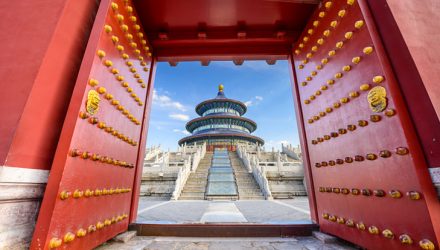By Todd Rosenbluth, CFRA
According to Google Translate, there are five different Chinese words for choice. ETF investors can relate to that.
For example, iShares China Large-Cap ETF (FXI) is the biggest ETF focused on China with $3.1 billion in assets and it gained 10% year to date through April 13. Meanwhile, the firm also offers iShares MSCI China (MCHI), a $2.2 billion ETF that climbed 16% this year. While MCHI has a 10 basis point lower expense ratio, the differential stems more from what’s inside these popular products.
FXI recently had 50% of assets in financial stocks and 13% in energy with just 9% in information technology stocks. In contrast, MCHI had less exposure to financials (29% of assets) and energy (6%) and more to technology (33%) and consumer discretionary (10% vs. 2%). For both ETFs, tech exposure is primarily through Internet software & services companies such as Tencent Holdings, but only MCHI holds Alibaba Group (BABA) and Baidu (BIDU).
Yet, there are strong ETF choices offered by other asset managers. SPDR S&P China ETF (GX) is up 15% in 2017, yet it has a higher stake in technology (29% of assets) and lower one in financials (24%) than MCHI. At a net expense ratio of 0.59%, GXC is 5 basis points cheaper than MCHI. In the three-year period, GXC generated a 7.4% annualized total return and outperformed MCHI by more than 50 basis points. The SPDR ETF has $830 million in assets.
